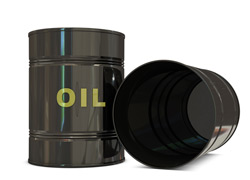Oil prices have been on a roller coaster ride since the COVID-19 pandemic hit the world in early 2020. After plunging to historic lows in April 2020, they have bounced back to some extent but still remain below their pre-pandemic levels. What are the factors that shape the oil market and what can we expect in the future?
The Current Situation
As of May 30, 2023, Brent crude oil’s price was $75.25 per barrel and WTI crude oil’s price was $71.99 per barrel, according to Oilprice.com. These prices reflect a recovery from the lows of April 2020, when the COVID-19 pandemic caused a sharp drop in oil demand and an oversupply of about 20 MMb/d. At that time, Brent crude oil’s price fell to $18 per barrel, the lowest level since 1999.

The recovery was driven by several factors, such as the gradual easing of lockdown measures, the progress of vaccination programs, the stimulus measures by governments and central banks, and the production cuts by OPEC+. OPEC+, a group of oil-producing countries led by Saudi Arabia and Russia, agreed to reduce their output by 9.7 MMb/d in May 2020 and gradually eased the cuts to 5.8 MMb/d by January 2021. The group has also shown its willingness to intervene in the market if needed to balance supply and demand.
However, the current oil prices are still below the pre-pandemic levels of around $80 per barrel, which were supported by strong global demand growth, geopolitical tensions, and supply disruptions in some regions. The COVID-19 pandemic has caused a significant impact on the oil industry, leading to reduced investment, delayed projects, bankruptcies, layoffs, and environmental concerns.
The Short-Term Outlook
In the short term, up to 2025, oil demand is expected to return to 2019 levels by late 2021 to early 2022, depending on the duration of lockdowns and the pace of GDP recovery. According to the US Energy Information Administration (EIA) forecast, Brent crude oil’s nominal price will grow to $66 per barrel by 2025. However, this projection is subject to various risks and uncertainties, such as:

- The speed and effectiveness of COVID-19 vaccination programs
- The compliance and duration of OPEC+ production cuts
- The response of US shale oil producers
- The geopolitical tensions in major oil-producing regions
The COVID-19 vaccination programs are crucial for restoring normalcy and boosting economic activity, which in turn will increase oil demand. However, the availability and distribution of vaccines vary across countries and regions, creating uncertainty about the pace and extent of recovery.
The OPEC+ production cuts have been effective in stabilizing the oil market and supporting prices. However, the group faces challenges in maintaining its cohesion and discipline as demand recovers and prices rise. Some members may be tempted to increase their output to gain market share or revenue.
The US shale oil producers have been resilient in the face of low prices and reduced investment. They have improved their efficiency, lowered their costs, and hedged their production. However, they also face financial constraints, environmental regulations, and social pressures. Their ability to ramp up production quickly will depend on these factors as well as on price signals.
The geopolitical tensions in major oil-producing regions such as the Middle East, Africa, and Latin America pose risks for supply disruptions or conflicts that could affect oil prices. For example, the recent attacks on Saudi Arabian oil facilities by Yemeni rebels or the ongoing political crisis in Venezuela could escalate or spread.
The Long-Term Outlook
In the long term, up to 2050, oil prices are likely to be influenced by the nonrenewable nature of oil and the rise of alternative energy sources, especially in the context of an accelerated energy transition scenario.
According to McKinsey’s Global Energy Perspective report, long-term equilibrium oil prices have decreased by $10 to $15/bbl compared with pre-COVID-19 outlooks, as driven by a flattening cost curve and lower demand. Under an OPEC-control scenario, in which OPEC maintains its market share, the report sees a $50 to $60/bbl equilibrium price range in the long term.
The EIA predicts that by 2030, world demand will drive Brent prices to $79/bbl, and by 2040, prices will reach $84/bbl. By then, the cheap oil sources will have been exhausted, making it more expensive to extract oil. The nonrenewable nature of oil means that it will eventually run out or become too costly or difficult to produce.
The remaining resources are mostly located in deep water, unconventional, or politically unstable regions, which require higher investment, technology, and risk management. The rise of alternative energy sources such as renewables, hydrogen, biofuels, or electric vehicles will reduce the demand for oil in some sectors such as power generation, transportation, or industry.
These alternatives are becoming more competitive and attractive due to technological innovation, cost reduction, policy support, and consumer preference. The accelerated energy transition scenario assumes that governments, businesses, and consumers will take more ambitious actions to mitigate climate change and achieve net-zero emissions by 2050 or sooner. This scenario will have a significant impact on oil demand and supply, leading to lower prices and stranded assets.
Bottom line
Current oil prices are recovering from the COVID-19 shock but remain below pre-pandemic levels. The future of oil prices is uncertain and depends on various factors such as global demand, supply, geopolitics, and OPEC+ interventions. In the short term, up to 2025, oil prices are expected to increase moderately as demand recovers. In the long term, up to 2050, oil prices are likely to decrease or stagnate as alternative energy sources become more competitive and oil resources become scarcerz.


